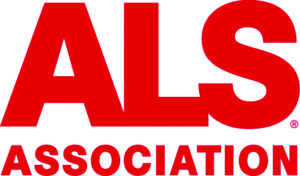Therapy Funded by The ALS Association Involving Injection of Antisense Molecules Into Spinal Cord Area of People with Lou Gehrig's Disease Deemed Safe in Recent Study
WASHINGTON, March 29, 2013 /PRNewswire-USNewswire/ -- The injection of antisense molecules into the space around the spinal cord of people with ALS is safe according to research published today. The first-in-human trial of this new therapy was funded by The ALS Association. The study was published today in the scientific journal Lancet Neurology.
ALS, also known as Lou Gehrig's Disease, is a progressive neurodegenerative disease that affects nerve cells in the brain and the spinal cord. The disease robs people of the ability to walk, to talk and even blink an eye. It traps them inside a body they no longer can control and ultimately prevents them from breathing as it takes their life. There is no known cause of the disease, although military veterans are approximately twice as likely to develop ALS as the general population.
"This trial is a landmark in ALS therapy," said Lucie Bruijn, Ph.D., Chief Scientist of The ALS Association. "By demonstrating the safety and practicality of this approach, it lays the groundwork for exciting new forms of treatment of ALS."
The study was led by Timothy Miller, M.D., Ph.D., of Washington University in Saint Louis, Mo. It compared the safety of delivering a single dose of antisense therapy versus placebo to the fluid surrounding the spinal cord in 21 patients with ALS. Several different doses were tested, and several patients re-enrolled and thus received more than one dose. The frequency of adverse events was similar between the two groups. The most common adverse event was post-lumbar puncture syndrome (characterized by a headache that is relieved by lying flat), as would be expected from the procedure. The study was not designed to test whether the antisense therapy had any effect on the disease, which would likely only emerge with longer-term treatment.
Antisense therapy targets a cellular messenger molecule, called messenger RNA, used to build proteins within cells. In this trial, the target was the messenger RNA for the protein Cu/Zn Superoxide Dismutase (SOD1). Mutations in the SOD1 gene account for about 20 percent of all familial, or inherited, ALS. The sequence of building blocks that make up the messenger RNA (the "sense" sequence) is used to design a complementary "antisense" molecule that will bind to it. That binding triggers the cell to destroy the messenger RNA, preventing the harmful SOD1 protein from being made. Results from SOD1-based animal models of ALS have indicated that reducing the level of SOD1 by antisense therapy increases lifespan.
The ALS Association's Translational Research Advancing Therapies for ALS (TREAT ALS™) program provided funding at each stage of development for this therapy, beginning with establishing the proof of concept in pre-clinical work. That work was led by Don Cleveland, Ph.D., and Richard Smith, M.D., both of the University of California at San Diego, along with Dr. Miller, Dr. Cleveland's lab, and Frank Bennett, Ph.D., of Isis Pharmaceuticals, developer of the antisense molecules used in the research program. Merit Cudkowicz, M.D., of Massachusetts General Hospital, was co-investigator of the clinical trial.
This first-in-human trial of an antisense therapy for a neurodegenerative disease is the culmination of years of work by scores of people from academia and biotechnology, working in partnership to stop ALS," Dr. Bruijn said. "We still have much work to do before we know whether antisense therapy can offer benefit to patients with SOD1 mutations, but the evident safety of the procedure is very encouraging and should allow larger and longer trials in the near future that can tell us more about the potential of this form of treatment."
The ALS Association is grateful to have received funding to support this new groundbreaking research from the following:
The Kanter Family ALS Research Fund and The ALS Association Greater Philadelphia Chapter
The Jeff Kaufman Fund and The ALS Association Wisconsin Chapter
The Wallace Genetic Foundation and Mrs. Jean Wallace Douglas
The George Yardley Company, the family of George Yardley, and The ALS Association Orange County Chapter
Contributors to the Lou Gehrig Challenge campaign of The ALS Association
About The ALS Association
The ALS Association is the only national non-profit organization fighting Lou Gehrig's Disease on every front. By leading the way in global research, providing assistance for people with ALS through a nationwide network of chapters, coordinating multidisciplinary care through certified clinical care centers, and fostering government partnerships, The Association builds hope and enhances quality of life while aggressively searching for new treatments and a cure. For more information about The ALS Association, visit our website at www.alsa.org.
SOURCE The ALS Association
WANT YOUR COMPANY'S NEWS FEATURED ON PRNEWSWIRE.COM?
Newsrooms &
Influencers
Digital Media
Outlets
Journalists
Opted In





Share this article